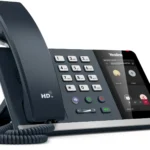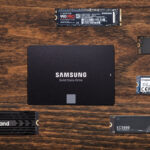Safaricom Power Bank Prices (Updated)

Your phone just died. You’re about to close that deal. About to pay for that matatu. About to receive that M-PESA. And boom—black screen.
That’s the moment you swear you’ll never leave home without a power bank again. If you’ve been hunting for reliable portable charging solutions in Kenya, you’re in the right place. Let’s talk about what’s actually available, what they cost, and how to pick one that won’t let you down when it matters most.
Power Up Your Life: Smart Charging Solutions That Work
Before we get into the specific models and prices, here’s something you should know. The power game has evolved. We’re not just talking about basic power banks anymore. We’re talking about smart charging ecosystems that keep your entire digital life running.
That’s where Minify Solutions’ Smart Power Charging Solutions come in. Think about it—most people don’t just carry one device anymore. You’ve got your phone, maybe a tablet, wireless earbuds, smartwatch. All fighting for battery life. Smart charging solutions handle multiple devices at once, optimize charging speed, and protect your gadgets from the kind of damage cheap chargers cause.
The Safaricom ecosystem works with various power bank brands to give you options. But here’s the thing—not all charging solutions are created equal. Some will fry your battery. Some will barely last six months. And some will save you from missing that crucial moment when your phone needs to stay alive.
What You’re Actually Paying For: Safaricom Power Bank Price Range
Let’s cut through the noise. Power banks in Kenya through Safaricom retailers typically range from KSh 4,500 to KSh 17,500, depending on capacity and features.
But here’s what nobody tells you—that price tag isn’t just about the battery inside. You’re paying for reliability. For safety circuits that prevent your expensive smartphone from becoming an expensive paperweight. For warranties that actually mean something.
The entry-level options start around KSh 3,000 when you shop smart. A 20,000mAh power bank retails between KSh 1,300 and KSh 1,800 in Kenya, though quality varies wildly at these price points. Mid-range models with decent capacity and fast charging sit between KSh 4,000-8,000. Premium options with wireless charging, massive capacity, or laptop-charging capabilities can push past KSh 20,000.
Understanding Power Bank Capacity: The mAh Numbers Game
Here’s where most people get confused. They see “50,000mAh” on a KSh 1,000 power bank and think they’ve hit the jackpot. Physics doesn’t work that way.
A 10,000mAh unit supports one to two full phone charges, while 20,000mAh is ideal for heavier users. But that’s not the full story.
The actual usable capacity is lower than what’s printed on the box. Why? Energy conversion loss. The actual charging times can be calculated as: Power Bank Capacity × 0.63 ÷ Phone Battery Capacity.
So that 10,000mAh power bank charging a 3,200mAh iPhone? You get about 1.9 full charges, not three.
For most Kenyan users, here’s what makes sense:
- 5,000mAh – Emergency backup, fits in your pocket, one partial charge
- 10,000mAh – Daily carry, 1-2 full charges, still portable
- 20,000mAh – Heavy users, travelers, 3-4 charges, slightly bulky
- 30,000mAh+ – Multiple devices, extended trips, laptop charging
Fast Charging: Why Seconds Actually Matter
You’re rushing to a meeting. Battery at 5%. You’ve got 20 minutes.
This is where fast charging becomes non-negotiable. Fast charging requires checking for 9V or 12V voltage and 2A or 3A current.
Look for power banks that support USB Power Delivery (PD) or Qualcomm Quick Charge (QC), both of which enable rapid wired charging. These technologies can charge your phone to 50% in about 30 minutes.
Standard charging pumps out 5W. That’s grandma-slow. Fast charging hits 18W-25W. The newest tech pushes 65W-100W for laptops.
Your phone’s charging speed matters too. Samsung phones charge at 45W, Apple iPhones usually charge around 25W, while a Motorola Razr Ultra 2025 can charge up to 68W.
Match your power bank’s output to your phone’s input. Otherwise, you’re leaving speed on the table.
Popular Power Bank Brands Through Safaricom Channels
Not all brands are equal. Some deliver. Some disappoint.
Oraimo – Kenya’s darling, affordable, stylish, and gets the job done with prices ranging from KSh 2,500 to KSh 7,000. Built-in cables on some models mean one less thing to forget.
Anker – The gold standard, reliable, durable, with an 18-month warranty and prices from KSh 4,000 to KSh 8,000. PowerIQ technology optimizes charging speed automatically.
Samsung – Premium pricing but rock-solid reliability. Especially good if you’re in the Samsung ecosystem.
Xiaomi – 18W fast charging, high capacity, affordable with prices from KSh 3,000 to KSh 6,000. Perfect for outdoor enthusiasts.
Romoss – Massive capacity options up to 30,000mAh with prices from KSh 5,000 to KSh 8,000. Built like tanks.
Top Power Banks Available via Safaricom Channels and Partners (Approximate Price Ranges)
| # | Brand and Model (Example Capacity) | Key Feature | Approximate Price Range (KSh) |
| 1 | Oraimo PowerBox 200 (20,000mAh) | Heavy-duty, high capacity, digital display | KSh 3,800 – KSh 4,500 |
| 2 | Oraimo PowerBox 100 (10,000mAh) | Compact, dual USB ports, LED indicator | KSh 2,500 – KSh 3,200 |
| 3 | Anker PowerCore Slim (10,000mAh) | Premium build, PowerIQ technology | KSh 4,500 – KSh 5,800 |
| 4 | Safaricom Branded Wireless (10,000mAh est.) | Wireless charging capability, USB ports | KSh 4,200 – KSh 5,000 |
| 5 | Xiaomi Mi Power Bank (20,000mAh) | High capacity, fast charging, great value | KSh 4,200 – KSh 5,500 |
| 6 | Oraimo Toast 10 Slim (10,000mAh) | Ultra-slim design, dual input | KSh 2,000 – KSh 2,800 |
| 7 | Redmi Power Bank (20,000mAh) | High capacity at an affordable price | KSh 3,200 – KSh 4,000 |
| 8 | Tecno Omni-Tank Powerbank (20,000mAh) | Reliable performance, African engineering | KSh 2,800 – KSh 3,500 |
| 9 | Oraimo Traveler Link 20 (20,000mAh) | High capacity, 12W output | KSh 3,800 – KSh 5,000 |
| 10 | Anker PowerCore+ (26,800mAh PD 45W) | Ultra-high capacity, Power Delivery for laptops | KSh 13,500 – KSh 15,000 |
| 11 | Oraimo Traveler 15 Flash (20,000mAh) | High capacity, 15W fast charging | KSh 4,000 – KSh 5,000 |
| 12 | Infinix XPower 20 Go (20,000mAh) | High capacity, affordable option | KSh 2,800 – KSh 3,500 |
| 13 | Oraimo Traveler Link 27 (27,000mAh) | Very high capacity, long-lasting power | KSh 4,200 – KSh 5,500 |
| 14 | Xiaomi 10000mAh (10,000mAh Wireless) | Wireless charging option, compact | KSh 3,900 – KSh 4,800 |
| 15 | Tecno Ultra-Tank Powerbank (10,000mAh) | Compact, reliable, quick charge support | KSh 1,800 – KSh 2,500 |
Please Note: Safaricom often stocks products from reputable brands like Oraimo, Anker, Xiaomi, and Tecno. The actual stock and prices may vary by specific Safaricom outlet or authorized dealer and may include a special “Lipa Mdogo Mdogo” (installment payment) price option not reflected in the range above.
Wireless Charging: Worth the Premium?
Cables are annoying. We all know it.
Wireless power banks use Qi technology, a standard for wireless power transfer, allowing you to charge devices by simply placing them on the charging pad.
The benefits? Drop your phone and go. No fumbling with cables in the dark. Works with earbuds, watches, anything Qi-compatible.
The tradeoffs?
Wireless charging maxes out at 15W for MagSafe and Qi2, slower than wired charging which can exceed 25W. You pay more for the convenience. And positioning matters—if your phone isn’t aligned properly, charging efficiency drops.
For iPhone 12 and newer, MagSafe magnets solve the alignment problem. For everyone else, you’re playing the placement game.
Is it worth it? If you’re constantly juggling multiple devices and hate cable clutter—absolutely. If you need maximum speed and lowest price—stick with wired.
Making Your Power Bank Last (This is The Stuff Nobody Talks About)
You just dropped KSh 5,000 on a quality power bank. Here’s how to not need another one in six months.
Avoid heat exposure as high temperatures speed up battery wear and can cause overheating or swelling. Don’t leave it in your car. Don’t blast it with direct sunlight. Don’t charge it while it’s buried under blankets.
Leaving the power bank plugged in for hours after it’s full strains the battery and reduces its lifespan. Unplug when it hits 100%. Simple.
Avoid frequent deep discharges where the power bank hits 0% power—charge when it drops to around 20-30% to preserve battery health. Lithium batteries hate being completely drained.
Use quality cables.
Cheap or damaged cables can cause voltage drops, slow charging, or even short circuits. Don’t skimp on a KSh 100 cable to protect a KSh 50,000 phone.
For long-term storage, top the charge up every few months. Batteries self-discharge. A completely dead battery for months can permanently lose capacity.
Safety First: What Could Actually Go Wrong
Cheap power banks are fire hazards. Not being dramatic. Literal fire hazards.
Quality power banks have protection circuits for:
- Overcharging
- Over-discharging
- Short circuits
- Temperature control
- Voltage regulation
Cheap or damaged cables can cause drops in voltage, slow charging, or even short circuits.
Budget options skip these safety features. They advertise impossible capacities. They use recycled cells that degrade fast. They can damage your phone’s battery permanently.
Look for certifications. CE marking. FCC approval. UL listing.
Cheap batteries can start fires, so it’s essential to choose well-known, accountable brands.
Never compromise on safety to save a few hundred shillings. Your phone costs tens of thousands. Your data? Priceless.
Where to Buy
Counterfeits are everywhere. Especially for popular brands like Anker and Samsung.
Safaricom-authorized retailers stock genuine products at shops like Starmac Kenya, with prices clearly marked from KSh 4,500 to KSh 17,500.
Online options include Jumia, Masoko, Kilimall. Physical stores give you warranty confidence. You can touch, feel, check the build quality.
Red flags for counterfeits:
- Price too good to be true
- Packaging looks off
- No serial number
- Spelling mistakes on labels
- Suspiciously high capacity for low weight
Buy from authorized dealers. Keep your receipt. Register your warranty.
Read also: How to Spot Fake Power Banks in Kenya
Taking Power Banks on Flights
Planning a trip? Power banks have rules.
Power banks must go in carry-on luggage, not checked bags, and those under 20,000mAh are usually fine, though you should check with your airline first.
The reason? Lithium batteries can catch fire. Airlines want them in the cabin where crew can respond. Not in the cargo hold where a fire could go unnoticed.
For international travel:
- 100Wh limit (roughly 27,000mAh) without approval
- Larger requires airline permission
- Label should clearly show capacity
- Maximum 2 spare power banks per person
Most 10,000-20,000mAh power banks are fine. That 50,000mAh monster? Might get confiscated.
The Real Cost: Price Per Charge
Stop thinking about upfront cost. Start thinking about cost per charge.
A KSh 1,500 power bank that dies in six months costs more than a KSh 5,000 one that lasts three years.
Good quality power banks last 2-3 years, while cheap ones might die in 6 months.
Lithium batteries degrade with each charge cycle, typically showing noticeable degradation after 300-500 cycles.
Do the math:
- Cheap power bank: KSh 1,500 ÷ 180 charges (6 months) = KSh 8.33 per charge
- Quality power bank: KSh 5,000 ÷ 1,095 charges (3 years) = KSh 4.57 per charge
Quality costs less in the long run. Plus, you’re not dealing with the hassle of buying replacements every few months.
Making the Right Choice For Your Needs
Here’s the truth—there’s no “best” power bank. There’s the best power bank for YOU.
- If you’re a student: 10,000mAh from Oraimo or Xiaomi. Budget-friendly. Lasts a full day. Fits in your bag.
- If you’re a business professional: 20,000mAh with fast charging. Anker or Samsung. Reliable warranty. Professional look.
- If you travel constantly: High capacity, multiple ports. Maybe wireless for convenience. Romoss or high-end Anker.
- If you’re always outdoors: Solar charging option. Rugged build. Water resistance.
Don’t buy what your friend bought. Don’t buy the cheapest. Don’t buy the most expensive.
Buy what matches how you actually live your life.
The Bottom Line
A power bank isn’t just an accessory. It’s insurance against missed opportunities. That deal you couldn’t close because your phone died. That emergency call you couldn’t make. That M-PESA payment you couldn’t receive.
These moments cost more than any power bank ever will.
In Kenya, quality power banks through Safaricom channels range from KSh 4,500 to KSh 17,500, with budget options starting lower. Choose based on capacity, charging speed, brand reputation, and your actual usage patterns.
Invest in quality. Buy from authorized dealers. Take care of it properly. And never let a dead battery stop you from seizing opportunities.
Your future self—the one who closes that deal, makes that call, sends that payment—will thank you.
And if you’re serious about staying powered up across all your devices, check out those smart power charging solutions that take your charging game to the next level.
Because in 2025, staying connected isn’t optional. It’s survival.
Read also:


 IP Phones & PBX
IP Phones & PBX
 Solid State Drive
Solid State Drive